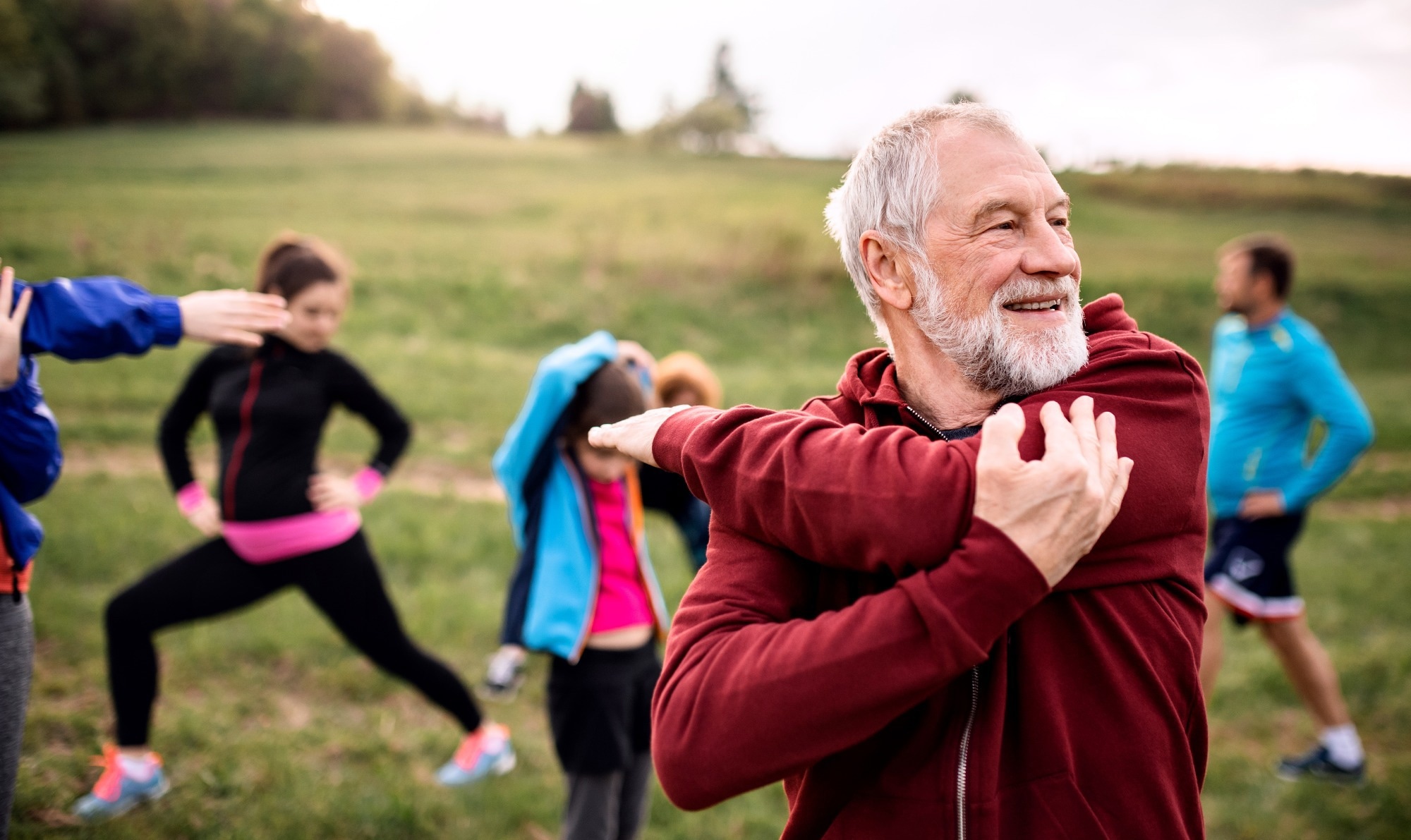In a recent study published in the PNAS Journal, researchers evaluated the impact of age, body mass index (BMI), and gender on ventilation, aerosol particle concentration, and emission among healthy individuals during physical exercise and at rest.
 Study: Lung aerosol particle emission increases with age at rest and during exercise. Image Credit: GroundPicture/Shutterstock.com
Study: Lung aerosol particle emission increases with age at rest and during exercise. Image Credit: GroundPicture/Shutterstock.com
Background
Airborne transmission of respiratory pathogens, including severe acute respiratory syndrome coronavirus 2 (SARS-CoV-2), rhinoviruses, and influenza viruses, is critical to the increased incidence rate of associated infections.
The risk of developing infection is more significant when exercising indoors since the particle emission rate (from aerosols) can rise 100 times higher from the resting state to maximal physical activity. Studies have assessed the impact of age, body mass index (BMI), and sex on the emission of particles from aerosols at rest without evaluating the influence of ventilation.
About the study
In the present single-center study, researchers investigated the influence of age, BMI, and sex on the emission rates of aerosol particles at rest and during physical exercise. They also evaluated the impact of age on aerosol particle size distribution and the volume of aerosol particles emitted per minute.
The emission of particles from aerosols was assessed in ambient conditions at rest and during a graded cardiopulmonary exercise test from the resting state to that of voluntary exhaustion among 80 healthy individuals aged between 20 and 39 years (young) or between 60 and 76 years (old) with different BMI values.
The study participants and staff underwent SARS-CoV-2 antigen testing before study initiation. Only non-smoking individuals without any history of respiratory diseases and without SARS-CoV-2 infection in the four weeks before enrolment in the study were included.
Oxygen intake, ventilation, and carbon dioxide generation were assessed in the breath-by-breath analysis. The findings were normalized to the individual’s maximum power. The individual curves were fitted logarithmically to estimate the particle emission at a particular percentage of total power. Subsequently, the estimates were averaged for the sex and age groups.
In addition, the size of the dried aerosol particle residues was measured. The aerosol particle volume distribution was calculated based on the frequency distribution of the dried particles, assuming that they were spherically shaped.
Ventilation was measured to calculate the emission of particles by an individual per unit of time and their concentration in room air to estimate the risk of COVID-19. The particle range of measurement for the device was 200 nm to 10 μm in diameter.
To comparatively assess the risk of infection under various conditions and across ages, the cumulative dry volume of exhaled aerosol particles was calculated as a function of the number of particles emitted and the size of the particles distributed, based on which the total volume of particles emitted was calculated to estimate the viral load, assuming a constant concentration of SARS-CoV-2 in room air.
Results
In resting conditions, the air exhaled by older individuals comprised a three-fold greater concentration of respiratory aerosol particles than that of younger individuals [310 versus 105 particles/L, respectively]. In the resting state and during physical activity, older individuals emitted >2.0-fold more aerosol particles per minute than younger individuals.
Older adults also emitted 5.0-fold more dried aerosol particle residues than younger adults. BMI and sex did not significantly impact aerosol particle emission among test individuals. Older women showed 137% greater emission than older men (500 versus 210 particles/L, respectively).
Ventilation was higher among younger adults than older adults by 17.0% and 61% higher among younger males than younger females. Likewise, ventilation was greater among older males than older females by 24.0%.
At rest, the number of particles emitted by older adults was 2.70-fold more significant than that emitted by younger adults. However, there were no significant differences in the emission of aerosol particles between similarly aged men and women.
During physical activity, younger adults attained greater maximum power output than older adults, and males showed higher values at utmost power than females. From resting to maximal physical activity, ventilation improved by 8.60 and 6.30 among younger and older adults, respectively (100 versus 65 L/min for younger versus older adults, respectively).
Younger and older males ventilated 53.0% and 57.0% more than their female counterparts. During exercise, the concentration of aerosol particles emitted by young and old adults increased by six-fold and seven-fold, respectively.
The maximum concentration of aerosol particles was three-fold higher among older than younger individuals (2,090 versus 620 particles/L, respectively). During the highest level of physical activity, aerosol emission was two-fold higher among older adults than younger adults due to a greater concentration of aerosol particles among older individuals (116,300 particles/minute) than young individuals (54,800 particles/minute).
Older adults attained the mean rate of aerosol particles emitted by younger adults at 60% of their maximum workload. Older adults had more particles >0.4 μm in size than younger adults, indicating a larger capacity for carrying exhaled SARS-CoV-2 among the elderly during physical activity. Older adults emitted four to six times more dry volume than younger adults, even during maximal exercise.
Conclusion
Overall, the study findings showed that older individuals emitted nearly double the number of aerosol particles emitted by the younger participants, despite lower ventilation, indicating that older adults must be more guarded against aerosol-mediated infections, especially during indoor group exercises.
Exercise and age increased aerosol particle emissions, whereas BMI and sex had minor impacts.
Journal reference:
-
Schumm, B., Bremer, S., Knödlseder, K., Schönfelder, M., Hain, R., Semmler, L., Lorenz, E., Jörres, R., Wackerhage, H. & Kähler, C.J. (2023) Lung aerosol particle emission increases with age at rest and during exercise. Proceedings of the National Academy of Sciences, 120 (22). doi: https://doi.org/10.1073/pnas.2301145120. https://www.pnas.org/doi/10.1073/pnas.2301145120